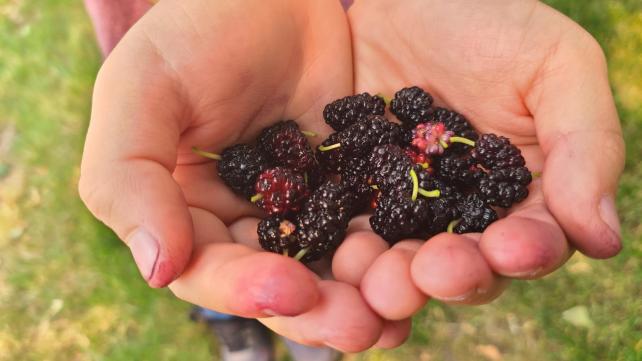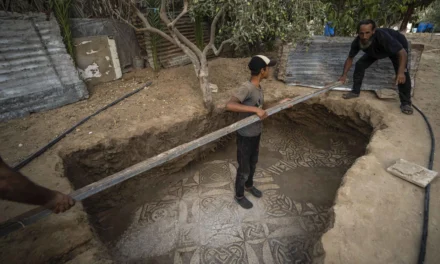In our neighborhood a patch of wild thicket backs up to the rear yards of townhouse communities in the area. The patch extends out and runs along the main road all the way to a nearby park. Every Summer, the kids and I walk along this road and snack on the wild raspberries, blackberries and wineberries that decorate the bushes. After those berries have gone, the highly invasive but oh-so delicious Autumn berries start to ripen and we come back in August and September to walk the road again with storage containers in hand.
I don’t remember when I first began foraging for wild foods with my children, but it’s been a rewarding adventure ever since.
The thing about foraging – collecting wild foods – is that it’s inherently dangerous. Allah, subhana wa ta ala (May He be praised and exalted), has created an enormous variety of plants on this Earth, and many of them are toxic to humans. Some wild foods, like certain berries and fungi, can cause life-threatening illness when ingested. Others, like look-alike greens and flowers, can cause immediate rashes and blisters simply from touching them. Even wild plants that are generally safe to consume, can only be eaten in specific ways because consuming too much of them, or consuming the wrong parts of the plant, can have adverse effects.
Because of these dangers, foraging is never something you want to embark on, especially with children, without having a thorough knowledge of the foods you are picking and how to properly use them. I like to attend foraging workshops and often use expert guides to help me distinguish between what’s safe and what needs to be stayed away from.
One such guide is Adele Nozedar’s Foraging with Kids: 52 Wild and Free Edibles to Enjoy with your Children.
This beautiful 224-page guide was created with families in mind and focuses on common, easy-to-identify plants. Unlike highly technical guides that read like the author assumes you have a botany degree, Nozedar’s guide reads like a casual conversation, inviting the reader into her passionate world and making the information easy to digest for parents and children alike.
The guide is also organized by the kind of plant being foraged (e.g. fruits, berries and flowers followed by wild herbs and weeds) rather than by season. I found this interesting because it was another difference from other guides I have that tend to organize their content by season.
As an amateur forager myself, I liked Nozedar’s approach of learning by the plant because it allowed me to see each plant as a whole, learn how it grows, and learn what it looks like in its different stages and seasons of growth.
Like most foraging guides, included in the book are plant descriptions, details of its appearance and growth, and a seasonal calendar that charts which parts of the plants are available for harvesting at which time of year. This is a useful tool for giving yourself a heads-up of what can be expected outdoors before your family walks.
For example, if I want to try foraging today, I can open up the calendar to the Early Summer section and see that it’s a great time to harvest Chicken of the Woods, blackberries and Plantain Leaves but the rosehips, which I love to collect for my wild rosehip tea, won’t be available until early to late Autumn.
At first glance, my biggest criticism of the guide was the black-and-white illustrations. Learning to identify plants means not only becoming familiar with their shape, size, structure, and seasons but also knowing their colors as they grow! To have a guide, especially one to be used with children, that only contains black and white sketches was a bit disheartening.
However, once I started reading the book closer, I realized that the black and white illustrations were intentional by the author and left as an invitation for the children to color in as they find the plant. This connecting activity takes the book from being a simple reference guide to doubling as a child’s first step into nature journaling, a training effort I greatly appreciated as I’ve always enjoyed encouraging my children to journal the plants we find and keep a plant journal for myself as well.
Other extension activities included in the book are space for the children to name the plants they find, culinary recipes for each plant discussed, and additional resources for diving deeper into the wild edible rabbit hole.
Overall, I thought Foraging with Kids makes a great addition to the home library and is a wonderful way to encourage children and parents alike to get outdoors more.
Check out more of the book here.
The photo accompanying this story is of the author’s son on a mulberry-picking adventure in the neighborhood of a nearby masjid.
By Melissa Barreto, a home-educating mother of five children and the Co-Founder of Wildflower Homeschool Collective, a homeschool organization based in Northern New Jersey.














